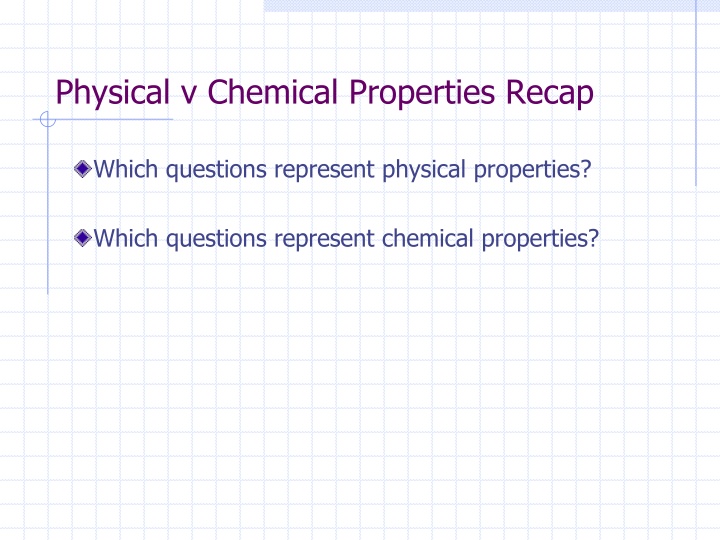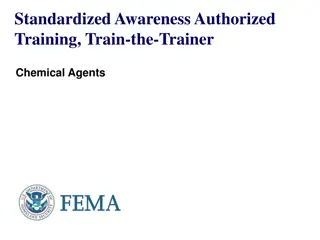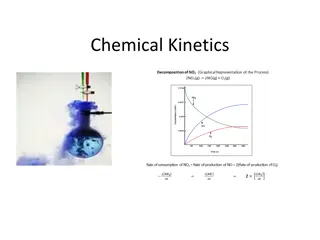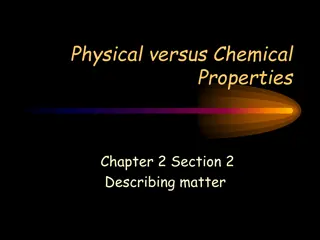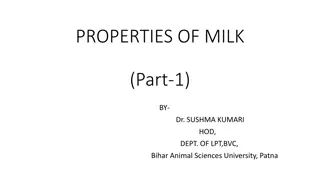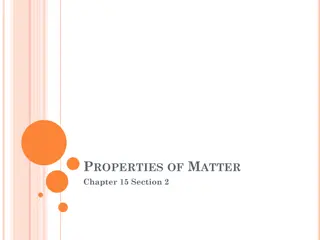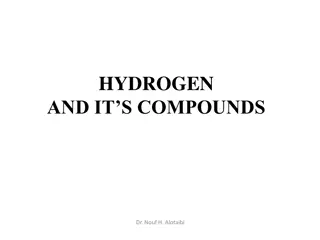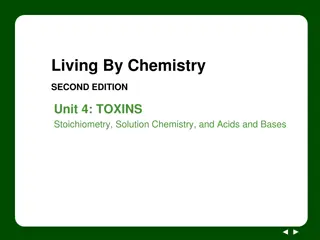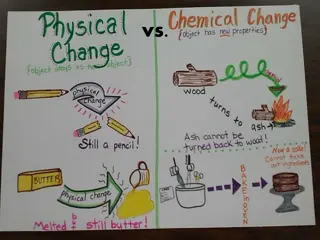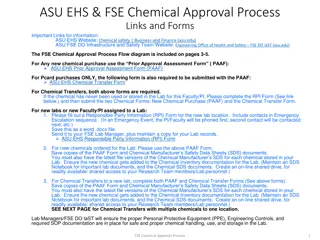Physical vs Chemical Properties Summary
Matter and its properties, including physical and chemical attributes, are discussed alongside key concepts such as density, volume, and mass. Learn about identifying substances, testing purity, and making appropriate substance choices. Explore the importance of accurate measurements and calculations in science.
Download Presentation

Please find below an Image/Link to download the presentation.
The content on the website is provided AS IS for your information and personal use only. It may not be sold, licensed, or shared on other websites without obtaining consent from the author.If you encounter any issues during the download, it is possible that the publisher has removed the file from their server.
You are allowed to download the files provided on this website for personal or commercial use, subject to the condition that they are used lawfully. All files are the property of their respective owners.
The content on the website is provided AS IS for your information and personal use only. It may not be sold, licensed, or shared on other websites without obtaining consent from the author.
E N D
Presentation Transcript
Physical v Chemical Properties Recap Which questions represent physical properties? Which questions represent chemical properties?
Section 4: Focus on Density Objectives: Define Density and understand how scientists use density. Perform sample calculations with density.
Matter & Its Properties Knowing fundamental physical and chemical properties of matter can help you: 1. Identify a substance and test its purity 2. Determine an appropriate substance for a particular application 3. To separate substances in a mixture You ve studied several. Today we ll be Reviewing some measurement calculations & Looking closely at the physical property called density.
How to get the units It s important to remember how exactly you get numbers you use for measurements. Length (in meters) (therefore area and volume too) are measured using a ruler of some sort. Volume (in liters) of a fluid-like or oddly shaped object can be achieved using a graduated cylinder or beaker. It can also be calculated when you length, width, and depth. Mass (in grams) is measured using a triple beam or digital balance. & Remember all measurements need the ACCURATE NUMBER (the last will always be a decimal) & UNITS to be complete.
Measurements: Recall Volume is the amount of space an object takes up and is found by multiplying length times width times height. V = l x w x h It s units are read as cubic units What is the volume of this cube (it s in cm)? 5cm x 3cm x 4cm 60cm3 You can also calculate volume using a beaker or graduated cylinder.
Measurements: Recall Mass is the amount of matter in a substance (# of atoms) Weight is the mass of an object times the force of gravity. Density is how much of a substance is packed into a given amount of space. How many actual molecules. Density is found by mass divided by volume. Density = mass/Volume It s unit is read: grams per cubic (unit) If the mass of the same block is 120 grams, what is it s density? 120g/60cm3 = 2grams per cubic cm
The Density Triangle This tool can be used to remember the equation for finding density, mass, or volume when working with density problems
Why Study Density? Density is determined for substances because of several factors: Identification of an unknown. The density of a substance can determine its purity. What is the difference between 24ca. And 14 ca. gold? Silver, copper, cadmium, iron, nickel, zinc, all can be added Mixing substances of varying densities can change the properties of the mixture. We can increase the viscosity of a substance by mixing in denser fluids Denser objects sink in substances of lower densities
Application: Measuring Fluid Density: With a Graduated Cylinder Density of a liquid can be determined by weighing an accurately known volume of a liquid, using a graduated cylinder. Measure a container s mass using a balance. Pour a known (or measured) volume of a fluid in the container to measure its volume. Measure the new mass. Subtract the new mass from the original mass to determine the mass of the solution. Divide the mass by the volume. When reading the volume of a liquid, take the reading at the lowest part of the meniscus.
Plot These Data On the graph provided, plot these data points. Draw a straight line through the points and determine the slope of these lines. Use the equation RISE = Slope RUN Water Mercury Volume (mL) Mass (g) Volume (mL) Mass (g) 0 0 0 0 5 5 2 27.1 10 10 3 40.65 15 15 4 54.2 20 20 5 67.75
Water Mercury Volume (mL) Mass (g) Volume (mL) Mass (g) 0 0 0 0 5 5 2 27.1 10 10 3 40.65 15 15 4 54.2 20 20 5 67.75
What You Have Determined Mass and Volume are two types of measured data. The slope of these two properties (volume and mass) reveals the substance s density at STP (at normal temperature and pressure).
Standard: The Density of Water Water is the baseline for many measurements. Temperature Densities Etc. The standard density for water is 1.0g.mL. But density depends on temperature! Solid (ice): 0.9167 g/cm3 Liquid (water): 1.0 g/cm3 (at 4 C) Gas (vapor): varies considerably but warm moist air is less dense than cold dry air, hence the reasons why clouds hover in the sky.
Practice You have 5 minutes to complete this practice. Find the area of each side of A (A, B, & C). Find the area of each side of B (use your handouts to calculate the volume of a cylinder) Find the volume of A & B. Find the density of A & B. B B. C r = 3cm = 3.14 Mass = 100g A A. mass = 64g 2cm 4cm 4cm 4cm
Independent Practice You have been given practice problems to work on. Work through the example problems until class ends. These are due tomorrow.
5m x 5m x 3m = 75m3 3.14 x (5cm)2 x 2cm 3.14 x 25cm2 x 2cm =157cm3 6cm x 2cm x 3cm = 36cm3 3.14 x (4m)2 x 9m = 452.16m3 10g = 0.28g/cm3 360cm3 9g = 0.111g/m3 452.16m3
